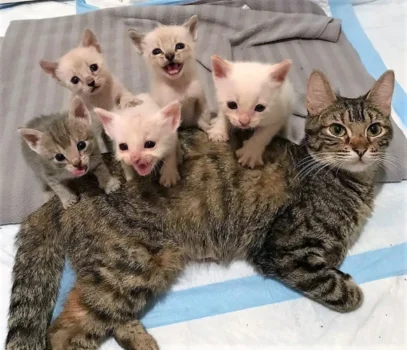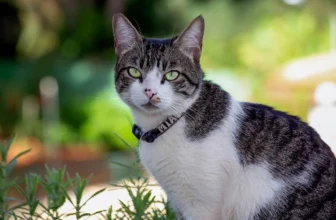Welcoming a new litter of kittens into your home can be an incredibly exciting time for any wirehair owner. However, it’s important to remember that caring for both the mother cat and her kittens during the postpartum period requires attention to detail and careful consideration. In this article, we’ll guide you through the postpartum care process, from preparing for birth to regular vet check-ups. Whether you’re a first-time wirehair owner or have been through this process before, we hope this comprehensive guide will provide valuable insights and tips to help you support your wirehair and her newborn kittens.
Preparing for Birth
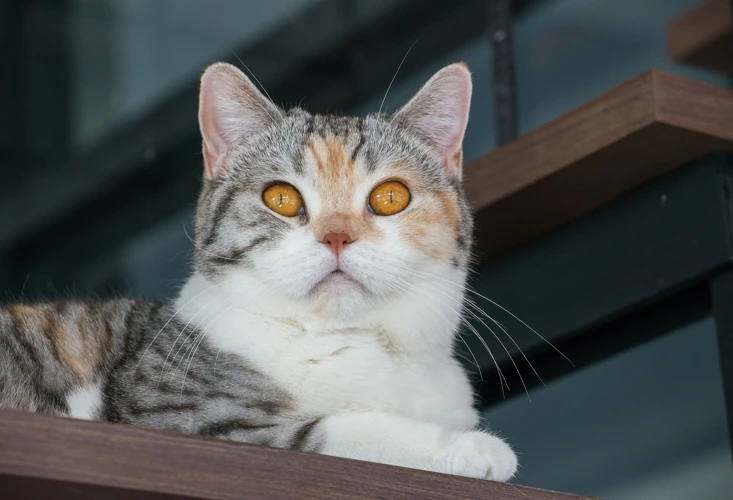
Welcoming new life into the world is an exciting and emotional experience for any pet owner. As a responsible wirehair owner, you want to ensure that your mama cat and her kittens have the best possible start. Preparing for the birth of your wirehair’s litter can be a daunting task, but with a little bit of planning and preparation, you can ensure a smooth delivery and a healthy postpartum period for your wirehair and her newborns. In this section, we’ll cover essential tips for creating a safe birthing space and stocking up on necessary supplies for the impending arrival. For more information about wirehair pregnancy stages and health issues, check out our wirehair pregnancy guide.
Creating a Safe Space for Birth
Bringing new kittens into the world can be an exciting yet stressful experience for both you and your wirehair. As you prepare for the birth, it’s important to create a safe and comfortable space for your furry friend to welcome her litter.
Here are some tips for creating a safe space for birth:
| Tip | Description |
|---|---|
| Choose a quiet location | Select a room in your home that is quiet, secluded, and away from heavy foot traffic. A bedroom or a spare room can be a great option. This will help your wirehair feel more at ease and reduce the chances of disturbances during labor and delivery. |
| Prepare the nesting area | Set up a comfortable and cozy nesting area for your wirehair to give birth. Use soft blankets or towels to line the nesting box and provide a warm and soft environment for the kittens. You can also add a heating pad underneath the blankets to keep the area warm. |
| Sanitize the area | Before birth, clean and sanitize the nesting area to prevent the spread of germs and infection. Use a pet-safe disinfectant to clean the area and change the blankets frequently to ensure that they are clean and dry. |
| Block off the area | Use baby gates or other barriers to block off the nesting area and keep curious pets or children away. This will help reduce stress for your wirehair and protect the kittens during the delicate first few weeks of life. |
By taking these steps, you can help your wirehair feel safe and comfortable during the birth process and create a welcoming environment for her new litter. Don’t forget to check out our wirehair pregnancy health tips for more information on preparing for birth.
Preparing Supplies for Birth
To ensure a successful and stress-free birth for your wirehair, it’s essential to have all the necessary supplies prepared ahead of time. Some important items to include are:
- Birthing Box: This should be a sturdy and spacious box or crate where your wirehair can give birth and nurse her kittens. Make sure it’s lined with soft blankets or towels for comfort.
- Thermometer: To monitor your wirehair’s temperature and make sure she doesn’t develop an infection, have a digital thermometer on hand. You can also use it to check the kittens’ temperature.
- Scissors and Thread: In case of emergency, you will need to cut the umbilical cords and tie them off. Have sterilized scissors and thread ready just in case.
- Towels and Wipes: Keep clean towels and unscented wipes nearby to clean up any messes and to dry off the kittens after birth.
- Kitten Milk Replacement Formula: In case the mother is unable to produce milk or if there are any complications, have a can of kitten milk replacement formula and bottle-feeding supplies on hand.
Remember, be mindful of your wirehair’s comfort during the birth and make sure she has easy access to food, water, and a litter box nearby. For more tips on preparing for a pregnant wirehair, check out our feeding guide for pregnant wirehairs. And once the kittens arrive, don’t forget to use our wirehair kitten checklist to make sure they’re growing and developing properly.
Postpartum Care for the Mother
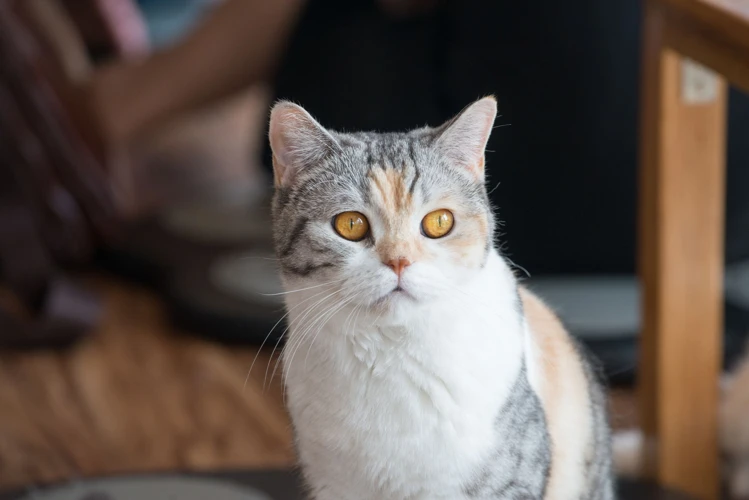
The arrival of a litter of Wirehair kittens is a joyful and exciting time, but it’s important to remember that the mother cat needs just as much care and attention as her newborns. After an intense period of labor and delivery, the new mother will require rest and support to fully recover and provide for her kittens. In this section, we will discuss crucial postpartum care for the mother, including creating a quiet and comfortable environment, optimizing feeding and hydration, monitoring for complications, and stimulating milk production. It’s important to keep in mind that ensuring the health and well-being of the mother cat is essential for the success of the litter. For helpful tips on preparing for Wirehair labor and delivery, check out our previous article onwirehair labor and delivery tips. And always remember to breed Wirehairs responsibly to maintain a healthy population.
Providing a Quiet and Comfortable Environment
As a Wirehair owner, it’s important to provide your new mother with a quiet and comfortable environment during her postpartum period. This will reduce stress and anxiety levels, which can have detrimental effects on both her and her kittens.
Here are some tips to keep in mind:
- Choose a quiet room with minimal foot traffic and noise. This can be a spare bedroom or even a large closet.
- Keep the room comfortably warm and free from drafts or sudden temperature changes.
- Make sure the mother and kittens have access to fresh air and natural light, but keep direct sunlight to a minimum.
- Ensure that the room is free from potential hazards such as cords, wires, and toxic substances.
- Use soft, clean bedding for the mother and kittens to sleep on. This should be changed regularly to maintain hygiene.
By providing a peaceful environment, you’ll also encourage the mother to bond with her kittens. This can improve both her socialization and hers kittens. Remember that the postpartum period can be stressful for the mother, and she may need some extra love and attention. Spend some time playing soft music, reading to her or simply sitting near her to provide emotional support.
If you plan on becoming a responsible Wirehair breeder, it is important to learn the proper and ethical techniques of breeding. You can learn more about breeding Wirehairs responsibly to ensure that you are doing your part to contribute to the overall health and well-being of the breed.
Feeding and Hydration
Proper feeding and hydration are crucial for the postpartum recovery of the mother and the growth and development of her kittens. In this section, we will cover what to feed a wirehair mother and how to ensure she stays adequately hydrated during this demanding time.
What to feed the mother: A wirehair mother needs a diet that is high in protein and nutrients. This helps her produce enough milk for her kittens and helps her body recover from the physical strain of birth. A high-quality commercial kitten food or a homemade diet that meets nutritional requirements is recommended. It is important to feed her small, frequent meals to prevent digestive discomfort and keep her energy levels up.
Ensuring Adequate Hydration: A lactating wirehair mother needs to drink plenty of water to maintain adequate milk production and prevent dehydration. Make sure there is always clean fresh water available in a location that is easily accessible to her. You can also provide her with wet food to increase her hydration levels.
Here is a breakdown of what to feed and drink for a wirehair mother during the postpartum period:
| Feeding | Hydration |
|---|---|
| High-quality kitten food or homemade diet | Clean, fresh water available at all times |
| Frequent small meals | Wet food to increase hydration levels |
| Protein and nutrient-rich to help milk production and recovery | Monitoring water intake and checking for dehydration |
It is important to monitor the mother’s appetite and water intake and consult a veterinarian if any concerns arise. By focusing on proper feeding and hydration, you can help ensure the health and wellbeing of both the mother and her kittens during the postpartum period.
Stimulating Milk Production
A mother cat’s milk production is essential for the survival and growth of her kittens. However, some mothers may need assistance in stimulating milk production. Here are some tips for helping your wirehair in this process:
| Tip | Description |
|---|---|
| Providing a calm environment | Stress can negatively impact milk production. Ensure that the mother feels comfortable and secure during the postpartum period. Limit visitors and loud noises in the room. |
| Encouraging frequent nursing | Allow the kittens to nurse as often as they want. Frequent nursing signals to the mother’s body to produce more milk. |
| Offering a balanced diet | Make sure the mother cat is receiving a balanced diet with proper nutrients. This will support her milk production and overall health. |
| Milk replacement if needed | If the mother is unable to produce enough milk, you may need to supplement with a milk replacement formula for kittens. Consult with a veterinarian for guidance. |
| Providing warmth | Keeping the kittens and mother warm can aid in milk production. Use a heating pad or warm blanket in the nesting area. |
Remember to consult with a veterinarian if you have any concerns about the mother’s milk production or the health of the kittens. With proper care and attention, your wirehair and her kittens will thrive during this special time.
Monitoring for Complications
It is crucial to monitor the postpartum mother for any complications that may arise. Here are some things to be aware of:
- Bleeding: Occasional bleeding is normal, but if the discharge becomes heavy or has a foul odor, it may indicate an infection. Contact your veterinarian immediately.
- Fever: A fever may indicate an infection. Take your mother cat’s temperature and contact your veterinarian if her temperature is over 102.5°F.
- Refusal to Eat: It is common for new mothers to have a decreased appetite, but if she is not eating at all, it may be a sign of a problem. Offer her food frequently and contact your veterinarian if she goes more than 24 hours without eating.
- Dehydration: Make sure your mother cat is drinking water. If she becomes dehydrated, she may need fluids from the veterinarian.
- Mastitis: This is an infection in the mammary gland tissue that can cause pain, swelling, and redness. It can also make the mother cat stop producing milk. If you suspect mastitis, contact your veterinarian immediately.
- Urine/Feces: Check your mother cat’s urine and feces regularly. If there is any sign of difficulty or abnormality, contact your veterinarian. Constipation can be common after birth, so make sure your cat is passing stools regularly.
If you notice anything unusual or are unsure about your cat’s behavior, do not hesitate to contact your veterinarian. It’s always better to be safe than sorry when it comes to the health of your mother cat and her kittens.
Postpartum Care for the Kittens
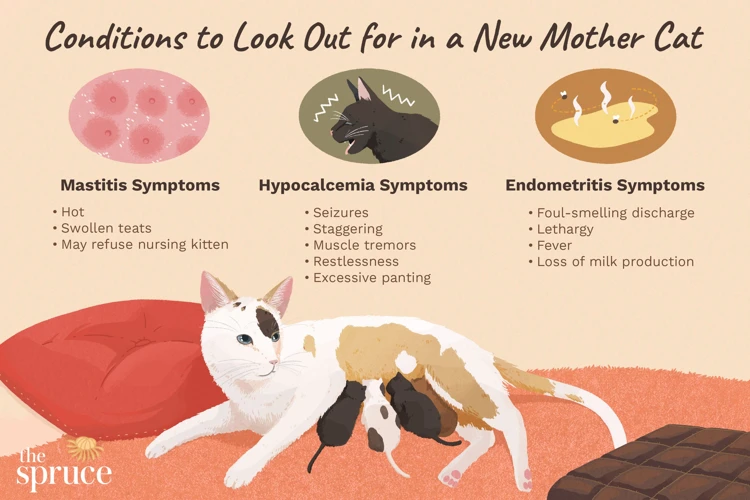
Welcoming a litter of Wirehair kittens into the world is an exciting time, but it also means extra responsibility and care. As the new mother recovers from giving birth, it’s important to provide postpartum care for her kittens. Proper postpartum care will ensure they have the best start in life and grow up to be healthy and strong adult cats. In this section, we’ll go over some of the essential steps to take to care for the newborn kittens. From assisting with breathing to keeping the nest clean, there are many key things to keep in mind to ensure the kittens thrive.
Assisting with Breathing and Blood Flow
Caring for newborn kittens is a delicate and crucial process. One of the most important aspects of postpartum care is assisting with their breathing and blood flow. This is especially important during the first few hours of life when the kittens are still adjusting to their new environment and may need some help getting started.
Positioning and Stimulation
One way to assist with breathing and blood flow is through proper positioning and stimulation. Newborn kittens have weak muscle tone and sometimes have difficulty taking their first breath. By positioning them correctly and stimulating their respiratory system, you can help get the oxygen flowing to their body.
How to Position a Newborn Kitten
Positioning is a crucial step in assisting with breathing and blood flow. You should place the kitten on its stomach, with its head facing downwards. This position helps to clear any fluid or mucus that may be blocking the airway. It also assists with the flow of oxygen-rich blood to the brain and other vital organs.
Stimulating the Respiratory System
After positioning the kitten, you can stimulate its respiratory system. By gently rubbing the chest and sides of the kitten with a warm, damp towel, you can help to encourage breathing. Be sure to use a gentle, circular motion to avoid causing any harm to the kitten’s delicate organs.
Maintaining Proper Body Temperature
Maintaining proper body temperature is also crucial for ensuring proper breathing and blood flow. Newborn kittens cannot regulate their body temperature on their own, and they rely heavily on their mother to keep them warm. You can assist by providing a warm and cozy environment, using a heating pad or warming lamp if necessary.
It is important to note that if a kitten is not breathing, or if you notice other signs of distress, such as a bluish tint to the skin or excessive coughing, you should seek medical attention immediately. Providing assistance with breathing and blood flow is just one aspect of postpartum care for newborn kittens. With proper care, you can help ensure that your kittens grow into healthy and happy cats.
| Assisting with Breathing and Blood Flow | |
|---|---|
| Positioning: | Place the kitten on its stomach, with its head facing downwards |
| Stimulating the Respiratory System: | Gently rub the chest and sides of the kitten with a warm, damp towel |
| Maintaining Proper Body Temperature: | Provide a warm and cozy environment, use a heating pad or warming lamp if necessary |
Monitoring for Proper Weight Gain
One of the most important aspects of postpartum care for wirehair kittens is ensuring that they are gaining weight properly. Weight gain is crucial for the development and health of the kittens, and monitoring it closely is essential. Here are some tips for monitoring weight gain:
- Weigh the kittens regularly: It is important to weigh the kittens every day for the first week, and then every other day for the next few weeks. This will help you keep track of their weight gain progress and catch any issues early.
- Check for signs of malnourishment: If a kitten is not gaining weight properly, they may appear weak, lethargic, or have a sunken appearance. If you notice any of these signs, it is important to seek veterinary care immediately.
- Ensure proper nursing: Kittens should be nursing from their mother frequently, and for sufficient lengths of time. If you notice that a kitten is not nursing enough, or is being pushed away by a littermate, you may need to intervene and ensure they are getting the nutrition they need.
- Consider supplementing: If a kitten is not gaining weight properly despite proper nursing, you may need to consider supplementing their diet with formula. Speak to your veterinarian about the best way to do this.
By monitoring the weight gain of wirehair kittens closely, you can ensure that they are developing properly and receiving the nutrition they need to thrive.
Keeping the Nest Clean
It’s important to keep the nest clean to ensure the health and hygiene of the kittens. Wirehair cats are known to be meticulous self-groomers, but it’s still necessary to help keep the nest clean.
1. Change soiled bedding regularly: Newborn kittens cannot regulate their body temperature, so it’s important to keep them warm and dry. Change the bedding as soon as it becomes soiled to prevent bacteria buildup.
2. Use unscented, gentle cleaning products: Clean the nest with a mild cleaning solution, such as a mixture of warm water and a gentle soap. Avoid using harsh chemicals or fragrances which can irritate the kittens’ delicate respiratory system.
3. Clean the mother: Keep the mother clean as well, especially around the nipple area, as any dirt or debris can be harmful to the kittens when nursing.
4. Monitor for signs of infection: Keep an eye out for any signs of infection, such as fever, lethargy, or discharge from the eyes or nose. If you notice any of these symptoms, contact your vet right away.
5. Keep the nest in a quiet, stress-free area: Stress can weaken the mother’s immune system and make the kittens more vulnerable to infection. Keep the nest in a quiet, low-traffic area to promote a stress-free environment.
By following these simple steps, you can help ensure that the nest is clean and comfortable for the mother and her kittens. A clean environment will help keep the kittens healthy and thriving during their crucial first weeks of life.
Providing Adequate Nutrition
Ensuring that the kittens are receiving adequate nutrition is crucial to their development and growth. It is recommended to provide the mother with a high-quality kitten food during her pregnancy and lactation, as this will provide the necessary nutrients for her and her kittens.
Once the kittens are born, it is important to monitor their weight gain to ensure they are getting enough milk from their mother. If weight gain is not satisfactory, supplemental bottle feeding may be necessary. Consult with your veterinarian on the appropriate formula and feeding schedule.
Here is an example of a feeding schedule for kittens:
| Age of Kitten | Number of Feedings per Day | Amount per Feeding |
|---|---|---|
| 0-1 week | 8-10 | 2-3 mL |
| 1-2 weeks | 6-8 | 5-7 mL |
| 2-3 weeks | 5-6 | 10-14 mL |
| 3-4 weeks | 4-5 | 14-18 mL |
| 4-5 weeks | 3-4 | 18-22 mL |
| 5-6 weeks | 3-4 | 22-28 mL |
It is important to note that kittens should never be fed cow’s milk, as it can lead to diarrhea and other health complications. Stick to the recommended kitten formula and schedule.
Additionally, make sure the kittens have access to fresh water at all times, and consider starting to transition them to solid kitten food at around 4 weeks of age. Consult with your veterinarian on appropriate solid food options and feeding schedules.
By providing adequate nutrition to both the mother and her kittens, you can ensure their healthy development and growth during the postpartum period.
Regular Vet Check-Ups
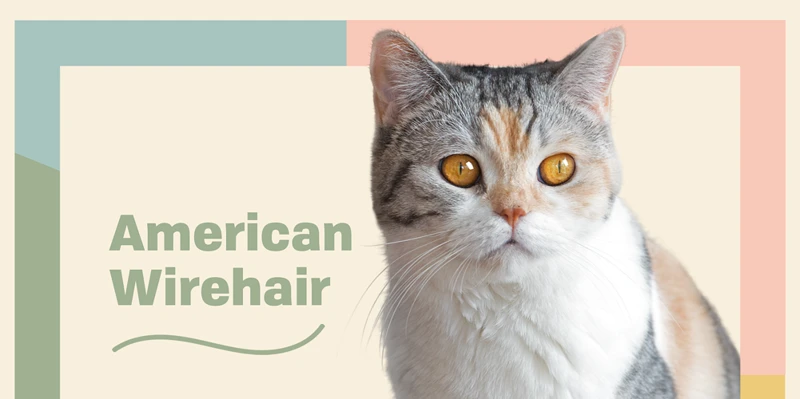
As a responsible pet parent, it’s essential to prioritize the health and wellbeing of your wirehair and her kittens. One way to ensure they stay healthy is by scheduling regular vet check-ups. Regular check-ups allow your veterinarian to identify any potential health issues before they become more severe and require more extensive treatments or medications.
Why are regular vet check-ups important?
Regular vet check-ups are crucial for ensuring your wirehair and her kittens remain healthy. During these visits, your veterinarian will perform a thorough examination that includes checking the mother’s overall health, monitoring her kitten’s growth, and identifying any signs of illness or infection. Additionally, your vet will be able to update any necessary vaccinations, provide parasite prevention medication, and offer advice on how to maintain good health for both your wirehair and her kittens.
When should you schedule check-ups?
It’s essential to schedule check-ups for your wirehair regularly. Your veterinarian may recommend more frequent check-ups for a newly pregnant mother, kittens, or for a wirehair with certain medical conditions. Generally, annual check-ups are recommended for adult cats. However, a newly pregnant wirehair might need more frequent check-ups throughout her pregnancy and after giving birth.
What to expect during a check-up?
During a check-up, your veterinarian will examine your wirehair and her kittens to evaluate their health. This includes checking their eyes, ears, mouth, skin, and coat, as well as examining their heart rate and breathing. Blood tests and fecal exams may also be necessary to identify any underlying medical issues that may not be apparent during the exam.
During the exam, your vet may also provide advice on nutrition, exercise, and overall wellbeing for your wirehair and her kittens. They may suggest dietary changes or recommend different types of food depending on your pet’s specific needs.
Conclusion
Regular vet check-ups are crucial for ensuring that your wirehair and her kittens remain healthy. It’s crucial to follow your veterinarian’s recommendations regarding the timing and frequency of check-ups. Any potential health concerns or underlying issues must be identified early to prevent them from developing into severe health problems. By prioritizing your pet’s health, you can ensure that she lives a long, healthy, and happy life.
Supporting Your Wirehair
Once your wirehair has given birth and her kittens are thriving under her care, it’s important to continue providing her with support and care as well. Postpartum can be a challenging time for new mothers, especially for wirehairs who are known for their energetic and lively personalities. Here are some ways to support your wirehair during this time:
Providing Adequate Nutrition: Nursing wirehairs require a diet that is high in calories and nutrients. Make sure to provide your wirehair with a balanced diet that includes plenty of protein, which is essential for milk production. You may also want to consider adding supplements to her diet to ensure that she is getting all of the necessary nutrients.
Encouraging Exercise: While it’s important for your wirehair to rest and recover, it’s also important for her to get light exercise. This can help prevent issues like constipation and promote healthy blood flow. Encourage your wirehair to take short walks or engage in gentle playtime.
Making Time for Bonding: During the postpartum period, your wirehair may experience a range of emotions as she adjusts to her new role as a mother. Make sure to spend time bonding with your wirehair through gentle petting and comforting words.
Being Mindful of Her Health: Keep an eye out for any signs of illness or complications that may arise during the postpartum period. Schedule regular check-ups with your vet and be sure to address any concerns promptly.
By providing your wirehair with the support and care she needs, you can help ensure that both she and her kittens thrive following birth. Don’t forget that this is an important time of adjustment for your wirehair, and that your attention and care can make all the difference in her recovery.
Conclusion
In conclusion, taking care of wirehair mother cats and their newborn kittens during the postpartum period is a crucial time that requires patience, dedication, and attention to detail. By providing a safe and comfortable space for birth, preparing the necessary supplies, and promoting a healthy recovery for the mother, you are setting the foundation for a successful postpartum period.
It is important to encourage the mother to eat well and drink plenty of water to aid in her recovery and milk production. Additionally, keeping a close eye on the mother for any complications or signs of illness is crucial to her overall health and the health of her kittens.
Of course, caring for the kittens during this time is equally as important. Ensuring that they are breathing properly and receiving adequate nutrition are key elements in their growth and development. Keeping their nest clean and monitoring their weight gain will also aid in their overall health and well-being.
Regular check-ups with a veterinarian will help to catch any potential health issues early on and ensure that the mother and her kittens are on the right track. And finally, providing love and support for your wirehair during this time will go a long way in helping her feel comfortable and secure.
By following these postpartum care tips for wirehairs, you can help ensure a successful and healthy outcome for both the mother and her precious kittens.
Frequently Asked Questions
What should I do to prepare for my wirehair’s birth?
To prepare for your wirehair’s birth, you should create a safe and comfortable space for the mother to give birth. Additionally, you should gather necessary supplies, such as clean towels, scissors, and heating pads, to assist with the birth process.
How can I ensure a safe and comfortable environment for the mother during postpartum care?
Provide a quiet and cozy space for the mother and her kittens. Make sure it is clean, warm, and free of drafts. Ensure that the mother has access to food and fresh water and is kept away from other pets that may interfere with her care or become aggressive.
What type of food is best for the mother during postpartum care?
The mother’s diet should be high in protein and calories. Consider providing her with kitten food, which is packed with nutrients that will aid in milk production and keep her energy high. Provide plenty of fresh water to keep her hydrated.
How often should I monitor the kittens’ weight gain?
You should monitor the kittens’ weight gain every day until they reach two weeks of age. After that, you can monitor their weight gain every other day. Weight gain is a good indicator of the kittens’ health and can help you catch any potential issues early on.
What are some common complications I should watch for during postpartum care?
Some common complications to watch for include mastitis in the mother, low milk production, and fading kitten syndrome, which is characterized by weakness and a failure to thrive in newborn kittens.
How can I stimulate milk production in the mother?
You can stimulate milk production by offering the mother a nutrient-dense diet, providing plenty of fresh water, and gently massaging her mammary glands. Make sure there are no blockages in the milk ducts, which can cause engorgement and reduce milk production.
Should I handle the kittens often during postpartum care?
Handle the kittens only when absolutely necessary, such as when administering medication or weighing them. Too much handling can be stressful for the mother and may cause her to become aggressive.
When should I schedule the first vet check-up for the mother and kittens?
You should schedule the first vet check-up for the mother and kittens within the first week of birth to ensure that everyone is healthy and thriving. Make sure to keep up with regular check-ups as recommended by your veterinarian.
What can I do to support my wirehair during postpartum care?
Spend time with her, offer her affection and love, provide her with a cozy bed and high-quality food, and monitor her behavior for any signs of distress or discomfort. Reach out to your veterinarian if you have any concerns.
When can I start to wean the kittens off of the mother’s milk?
Kittens can generally start weaning at around four weeks of age. You can provide them with kitten food mixed with water to make a gruel or softened dry kitten food. Allow the kittens to continue feeding from their mother until they are fully weaned.

